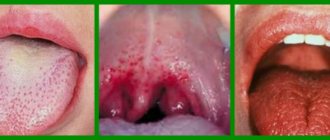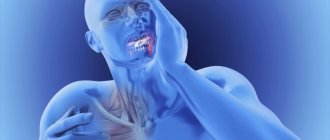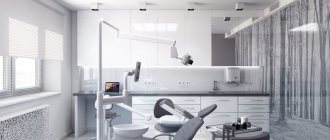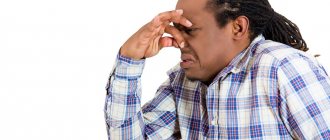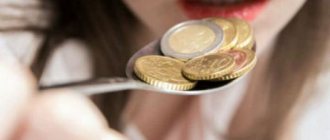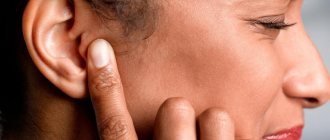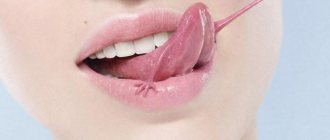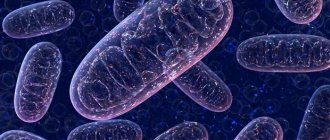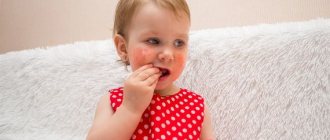Molluscum contagiosum in children
Molluscum contagiosum is more common in children than in adults. Children up to one year old practically do not get sick with molluscum contagiosum. This is due to the fact that in the first year of life the child’s circle of contacts is small: the child moves in a limited space, often specially prepared for him and under the strict supervision of adults, without trying to come into contact with other children. But as soon as a child begins to actively communicate and independently explore the world, the threat of becoming infected with molluscum contagiosum increases sharply.
The peak incidence of molluscum contagiosum in children occurs between the ages of 2 and 6 years. Immunity at this age is still weak. Children become infected through toys or dirty hands. The virus penetrates the skin in the place where the integrity of the skin is damaged - through wounds, abrasions, cracks. Children's skin is delicate and sensitive, and the activity of a preschool child is great. As a result, numerous microtraumas occur, opening the way for infection. Cases of infection with molluscum contagiosum while swimming in the pool have also been described.
From 6 to 10 years, the incidence of molluscum contagiosum decreases. Instilling household hygiene skills is of great importance. The sooner your child starts taking care of clean hands, the better.
Worms
If a child or parents do not follow hygiene rules and allow contact with street animals, then there is a high probability of worms appearing. This phenomenon is typical not only for children from the category of dysfunctional families, due to their activity and great desire to learn about the world around them. This period usually occurs after 1 year.
You can suspect that the rash is associated specifically with worms by the long-lasting rash, which does not decrease even under the influence of medicinal drugs. After therapy, the phenomena disappear on their own, without additional help. As worms multiply, they cause intoxication. It manifests itself as local allergic reactions.
Children are most often characterized by the appearance of 3 types of helminths:
- pinworms;
- roundworm;
- whipworms.
All these parasites belong to the category of nematodes. With helminthiasis, the rash most often has the appearance of acne.
Symptoms of molluscum contagiosum
The incubation period of the disease ranges from two weeks to several months, but most often the rash appears on the 14-15th day.
At first, single rashes appear, then there are more of them. Molluscum contagiosum can affect any area of the skin except the palms and soles. In children, exposed areas of the arms and legs, as well as the face and neck are most often affected. In adults, the genital area and the inner thighs are most often affected.
In the typical form of the disease, the rashes are located only in one anatomical area; in the generalized form, they spread throughout the body.
Rash
The elements of the rash look like protrusions (papules), firm and painless to the touch, pink or flesh-colored, with a pearlescent top. In the center of the papule there is a small depression, from which, when pressed, a white pasty mass is squeezed out. Papules have a round or oval shape, the size usually varies in the range of 2-5 mm, but sometimes the nodules merge, and then such formations can reach a diameter of 1 cm or more.
More about the symptom
Itching
In some cases, the rash is accompanied by itching, which intensifies when scratching. Under no circumstances should papules be scratched, as this can lead to a bacterial infection. The presence of a bacterial infection is indicated by redness of the skin around the papules, swelling, and suppuration.
More about the symptom
Allergy
Inflammation of the skin around the mouth often appears as a result of allergies. You can suspect this cause if the child has moved from infancy to the junior preschool group, teeth have already erupted, and the rashes are periodic. This means that the body reacts to certain foods , the rest of the time the immune system functions quietly.
Allergens are divided into several categories, depending on the route of entry. Often with this form of the disorder other symptoms appear: lacrimation, runny nose, swelling of the mucous membranes. The use of anti-cold medications has no effect.
Methods for diagnosing molluscum contagiosum
Molluscum contagiosum can be confused with manifestations of other diseases, including serious ones such as syphilis or cancer. Also, the activity of the molluscum contagiosum virus increases with a decrease in immunity, so in 20% of cases molluscum contagiosum accompanies HIV infection. This means that when rashes appear that correspond to the description of molluscum contagiosum, a medical examination is required to rule out such options.
When contacting a dermatologist, the doctor will examine the patient, make a diagnosis and suggest a treatment method.
Inspection
In most cases, the diagnosis of molluscum contagiosum is made by a dermatologist based on the results of an examination of the patient.
PCR diagnostics
Since HIV often accompanies molluscum contagiosum, PCR diagnostics for HIV can be prescribed.
More information about the diagnostic method
Serological blood test
When molluscum contagiosum is detected in adults, a serological blood test is prescribed to identify sexually transmitted infections (hepatitis B and C, HIV, syphilis, etc.).
More information about the diagnostic method
Sign up for diagnostics To accurately diagnose the disease, make an appointment with specialists from the Family Doctor network.
Folk remedies for treating rashes around a child’s mouth
Traditional medicine has proven itself to be a simple, inexpensive and safe way to cope with various types of problems. It is not always acceptable for young children, due to the high likelihood of allergies to herbs. When a rash appears around the mouth, products with anti-inflammatory and antiseptic effects help.
For example, the following can cope with perioral dermatitis:
- a decoction of string, St. John's wort, chamomile or sage in the form of lotions on the affected areas every 4-5 hours.
- lubricating the elements with propolis boiled in a water bath;
- using a mixture of honey, flax and onion juice, taken in equal volumes, boiled for 10 minutes. and cooled to room temperature;
- using lotions with soda solution (1 tsp per 1 cup of warm water);
- lotions with pulp or juice of fresh pumpkin;
- application of oak bark decoction topically.
Before using any product for the first time, you need to do a sensitivity test. To do this, apply a decoction to an inconspicuous area of skin and wait for 2 hours for the appearance of inflammation.
The following remedies can also help with atopic dermatitis:
- A mixture of rice starch, glycerin and milk, taken in equal proportions and mixed until smooth. Use as an ointment at night and store in the refrigerator.
- Raw, finely grated potatoes, used as a lotion.
- Mix 2 parts of crushed Kalanchoe leaves with 1 honey and stir. The paste is applied 2-3 times a day to the affected areas of the body. This method is effective, but is used with caution due to the high allergenic properties of honey.
- Celery root juice with salt and a few drops of vinegar is applied as a lotion to the skin 3-4 times a day. After 3 years, it is allowed to take 20 ml orally 2 times daily.
- Cucumber juice is applied every 2-3 hours, which helps moisturize the area and relieve inflammation.
- If 1 tsp. Boil chamomile in a water bath with the addition of 100 g of vegetable oil, then the resulting composition can be lubricated on the rash areas up to 3 times a day.
Tar, celandine, mash, potatoes are folk remedies that are used in the fight against atopic dermatitis
If your child has chapped lips and the skin around them, you can try to relieve the pain by using vitamin masks. They are used for shallow damage to the epidermis.
The available means are:
- chamomile ointment prepared at home;
- a mixture of liquid honey, vitamin A and E;
- mask made from sour cream or cream with a high degree of fat;
- Vaseline oil mixed with sea buckthorn and apricot oil.
A rash around the mouth, in the area of the nasolabial triangle in a child often occurs as a result of a combination of several factors. Monitoring the child helps to quickly determine the cause of the disorder, which helps avoid unpleasant consequences and complications.
Author: V.L. Dyleiko
Design: Anna Fleyman
Treatment methods for molluscum contagiosum
Molluscum contagiosum should be treated by a doctor. You should not try to remove papules yourself - this can lead to bacterial infection.
Treatment of molluscum contagiosum depends on a number of factors, primarily on the stage of development of the disease, the severity of symptoms and the state of the patient’s immunity. The following methods can be used:
Instrumental removal
Papules can be removed instrumentally, followed by treating the wound with antibacterial agents.
Credestruction
Cryodestruction is the removal of papules using exposure to low temperatures. Papules are treated with liquid nitrogen. Tissues treated in this way freeze and die.
Radio wave removal
Molluscum contagiosum papules can be removed using the radio wave method (using the Surgitron apparatus) and using a laser.
Electrocoagulation
Electrocoagulation is the effect of high-frequency current on papules. It is popularly described as “cauterization with electricity.” At the moment of discharge, a local strong thermal effect occurs, the tissues coagulate, which virtually eliminates the risk of infection at the treatment site.
Conservative treatment
The course of treatment for molluscum contagiosum may include conservative treatment with ointments and creams, as well as taking antiviral drugs (if the affected area is large).
Make an appointment Do not self-medicate. Contact our specialists who will correctly diagnose and prescribe treatment.
Rate how useful the material was
thank you for rating
What causes acne and what causes it
While stress may not cause acne, it can make existing acne worse. Research shows that when stress increases, the severity of acne increases. Acne may get worse if teens:
- sleep too little;
- eat certain foods traditional to the Western diet;
- use oily cosmetics and skin care products.
Almost everyone experiences at least a few breakouts during their teenage years. It is impossible to predict who will develop more severe acne, but there is an increased risk if one or both parents (or other close blood relatives) have had severe acne that results in scarring.
How is this treated?
Traditional drug treatment includes the use of topical ointments as prescribed by a doctor, along with oral antibiotic therapy or internal medications.
External therapy most often involves the use of retinoid ointments, which reduce inflammation and help exfoliate the top layer of skin. Topical ointments can be used without a prescription. These drugs contain a small amount of active substance and are therefore safe.
In addition to medical attention, it is important to remember that acne develops in moist areas of the skin, so maintaining proper hygiene is important. Timely and thorough cleansing of the skin can significantly reduce inflammatory processes. It is important to give preference to the prescribed care products and not to rub or scratch the wounds, as this will cause additional irritation and worsen the inflammatory process.
You can use drugs with antibacterial action that will help eliminate the inflammatory reaction. You should never squeeze the blackheads because this will spread the bacterial infection and may also cause scarring on the skin.
Extra hydration and protection
Many people make the mistake of thinking that acne-prone skin does not need additional moisturizing. The truth is that adjusting your moisturizing emulsion can help balance sebum production throughout the day. Moisturizing emulsions are easily absorbed, helping to balance moisture levels and prevent aggravation or irritation.
Skin affected by acne needs constant protection from solar radiation, since exposure to direct ultraviolet rays promotes the secretion of sebum. You need to choose sunscreen according to your age and skin type. It is recommended to give preference to products that do not contain parabens.
Nutrition and lifestyle
Lifestyle also influences acne. Diet, stress and hours of sleep also negatively affect the condition of the skin. It used to be that certain foods contributed to acne. Today, a personalized diet is being promoted:
- It is recommended to reduce the consumption of sweet or spicy foods;
- reducing foods that are not beneficial mitigates damage.
In addition to dietary recommendations, you should also use Omega-3 supplements. These are polyunsaturated fatty acids that the body cannot produce on its own, and they are found in sea fish oil or plant products. Their presence will help mitigate inflammatory processes in the body, which means it will have a beneficial effect on all skin diseases and acne in particular.
Acne classification
When classified by age group, there are mainly two types of acne:
- In newborns and young children. The belief that acne only affects teenagers and adults is wrong. Infants, children of preschool and early school age, although not often, also suffer from acne. Newborns face this problem because their mothers transfer hormones to them shortly before birth. Acne also occurs when the stress of childbirth causes the baby's body to release these hormones.
- Teenagers and adults. Acne affects 80% of people aged 11 to 30 years. Usually occur during pubertal changes in hormonal levels. Increased production of sex hormones during puberty makes the sebaceous glands more active.
Table - Classification of childhood acne by age
| Form | Child's age |
| Neonatal | from birth to 6 weeks |
| Infantile (early childhood) | from 6 weeks to 12 months |
| Middle childhood | from one to 7 years |
| Pre-adolescent | from 7 to 12 years (for girls before menarche) |
Neonatal acne develops during a period of hormonal changes. In all forms of acne, additional provoking exogenous factors play a significant role.
